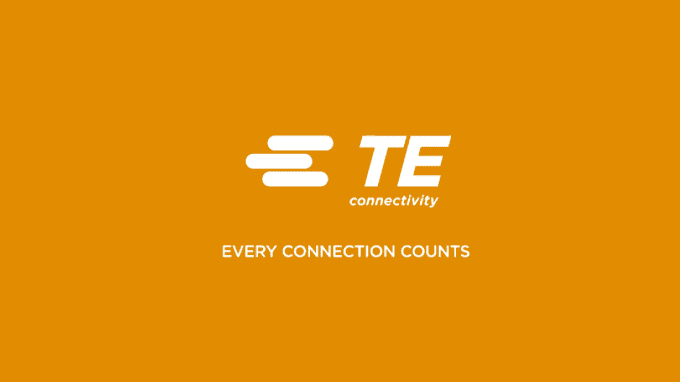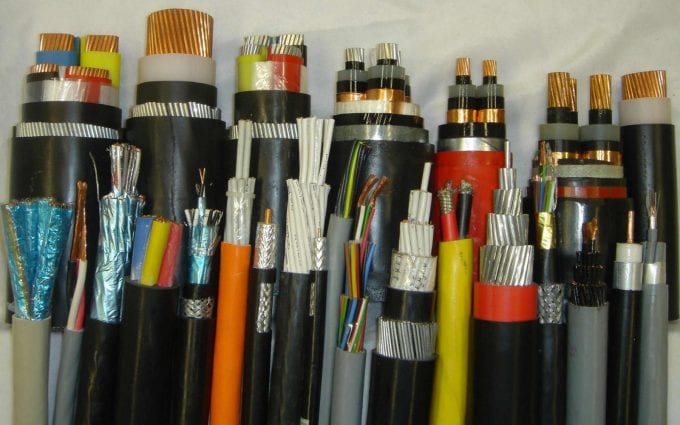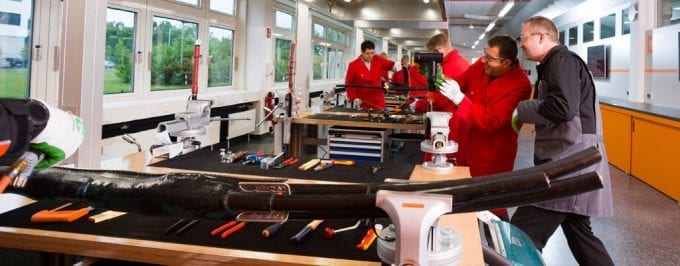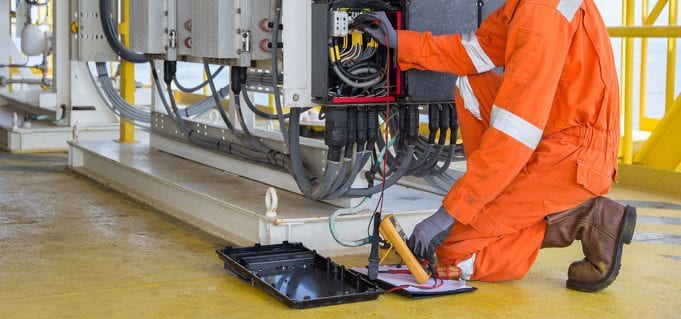The energy utility sector is changing dramatically, as outlined in this article – and these changes bring a number of unexpected consequences. One of the most notable issues has been caused by the retirement of a whole generation, commonly referred to as ‘baby boomers’ – leaving a significant knowledge gap in the industry.
This is a global phenomenon that affects all industries and all levels. – With experienced professionals from the baby boomer generation retiring at a rate of 10,000 per day worldwide across all sectors in 2016 – as calculated by EDA in a recent benchmark report, Trends in Executive Development 2016.
The impact has only continued to grow, forcing all industries to make a concerted effort to provide the necessary training and knowledge transfer, to create new generations of experts.
TE Connectivity (TE) is acutely aware of this situation and how it impacts the industry. Seasoned professionals are retiring all the time, and their unique experience is also going with them.

Around the time that they would have been apprentices was the last major change in the medium voltage network, where the polymeric cable was used for the first time. They have first-hand knowledge of the resulting shifts in cable accessories technology.
This includes difficulties linking the polymeric cable to the older paper and oil cables – which are still being used in networks today – as well as experience of the first introduction of heat shrink kits, which revolutionized the joining of medium voltage cables.
These experts are rapidly replaced by younger and less-experienced individuals – people who, through no fault of their own, simply lack the experience and the qualifications that they need in order to replace the outgoing experts effectively.

Many utility companies are also changing their approach altogether, with more outsourcing and less focus on structured training mechanisms that were present in the apprenticeship system.
Additionally, the different roles within the energy sector are changing, meaning that all types of utility workers are now expected to have an even wider skillset. New demands, driven from working with new technologies – such as renewable energy, or accompanying customers as they transition from energy consumers to energy producers – are part of the current reality of the sector.
While operations in the industry are evolving, so must the knowledge of engineers and installers. The ‘pinch point’ is on the medium voltage network, due to its layout design – and incidents on these types of networks have the biggest outage impact on consumers, as reported in the document ‘CEER Benchmarking Report 5.2 on the Continuity of Electricity Supply’.
As outlined above, many older technologies like paper cables are still in use, while the number of connections is on the increase. Often these connections are providing power to the network from distributed power generation and battery systems.
As a result of outsourcing trends, new players in the industry, and the evolution of demands, the limited ability for knowledge transfer between these outgoing professionals – who worked through the last major change of introducing polymeric cables to the medium voltage network – and the incoming workforce is often not enough.
Many network owners and distribution system operating companies do not have formal structures in place for managing this flow of information, and rarely with the relevant supporting assessments and means of standardization.
Where does TE Connectivity fit in? 
TE is acutely aware of the ongoing trend within the industry, as network owners and operators are focusing more and more on reducing the Total Cost of Ownership, which in turn puts increasing pressure on maintenance budgets.
This has led to outsourcing and, anecdotally, a highly concerning situation taking place, where errors during installation of cable accessories are an increasing problem – leading to failures during commissioning, and later during the operation of the network. But with focused, hands-on installation training, providing the knowledge to customize cables and components used in the medium voltage network, up to 95% of installation-related failures could be avoided.
These network interruptions caused by an installation error, along with the resulting higher maintenance costs, have a real impact on the wider economy. For example, an outage within a data center substation could affect all the businesses that rely on it for hours or even days, so the consequences can be catastrophic for customers of the energy networks.
To avoid such situations, costly redundancy is built into the networks through network redesign, additional feeds, and automated switching – although this is not possible everywhere. It is wholly better to get the installation correct the first time.
As a manufacturer, TE has over 60 years of material science, designing products to support the energy network and in particular, the distribution networks.
The company wants to address the current situation by ensuring that as many of these installation and handling failures as possible are eradicated – and it aims to do this through new manufacturer-led field training and technical training offerings.
In the current vacuum, created by a lack of global standards for installers of cable accessories, TE not only has a responsibility to produce reliable components – but also to ensure that the installation of these products is equally reliable, as well as being consistent and standardized.
The benefits of manufacturer-led training

As outlined above, lack of training can have serious consequences – so providing access to proper training and assessment of the new generation of workers is now more important than ever. The risks involved can be very serious in terms of both physical cost and exposure, much of which is hidden.
However, TE believes that there is a straightforward solution, and that is for manufacturers to lead the way in providing training services for companies that are installing medium voltage cable accessories on networks. This will ultimately increase their value and confidence as employees, while also saving their employers time and money in the long-term.
Manufacturer training centers can provide a wide range of resources, which would be otherwise hard to come by. This includes physical training space, expert instructors, training materials, various tooling, sample products, standardized assessment systems, access to product and engineering experts, testing in specialist labs, and walk-through of manufacturing facilities, where situated on site.
It is also far less expensive, and with a more certain outcome, to send a worker to an existing training center – established for many years with highly experienced personnel – than it would be for a company to set up a training system on their own.
Another advantage is that trainees are undergoing the same standardized certification process across the board, and even potentially being trained by the same individuals within regions.
TE Connectivity already has training centers in multiple regions – offering training that is adapted not only to the market and to regional requirements, but also to the components used and the physical environment in which the installers will be working. For example, taking into account different cable types, and the cable accessories solutions that best fit these cables, while incorporating relevant local practices.
TE training offering worldwide

TE’s training facilities are based on a legacy of product innovation and expertise, supported by a team of over 50 experts in more than 30 countries – enabling it to provide flexible training environments and customized services, when and where its customers need them.
A range of modern training locations is offered at the sites where TE carries out training. Visiting these sites enables hands-on investigation of failure scenarios alongside instruction from TE’s product management, technical, and engineering experts.
Alternatively, training can also be provided at the customer’s own facility, which is a familiar and cost-effective environment that offers the advantage of closer replication of the in-field scenarios. Training can also be arranged at one of TE’s distributor locations spread throughout the world.
TE’s on-site training and laboratory facilities all meet the latest safety standards and provide an ideal environment for trainees to learn how to install products correctly and efficiently. The company has dedicated training centers in Germany, France, the US, Russia, and China. Every year it trains over 1,500 energy industry professionals to install products on the medium voltage networks.
To find out more about TE’s manufacturer-led installation training services, please visit
www.te.com/trainingcenter.










